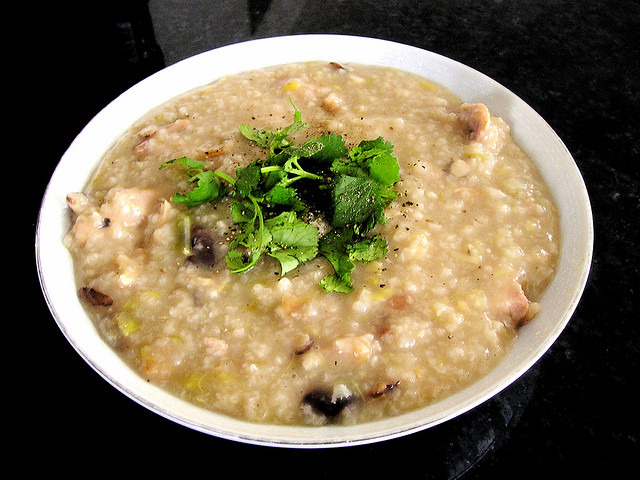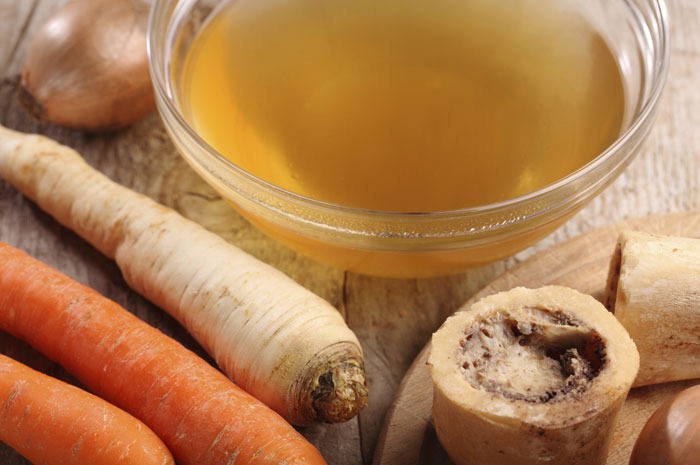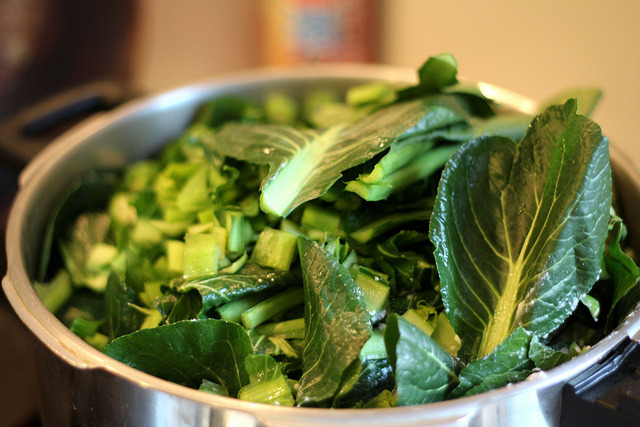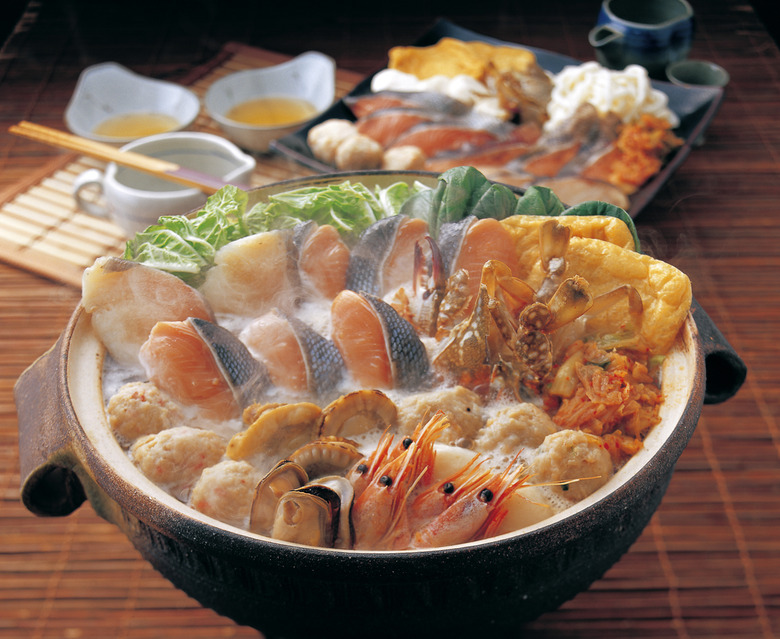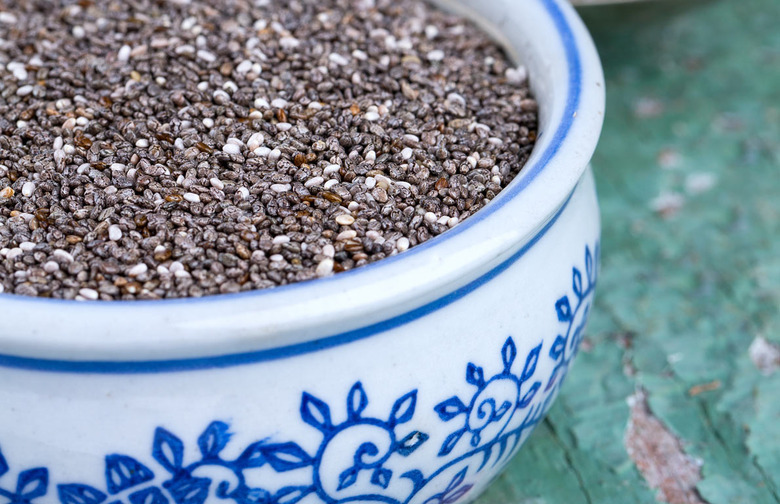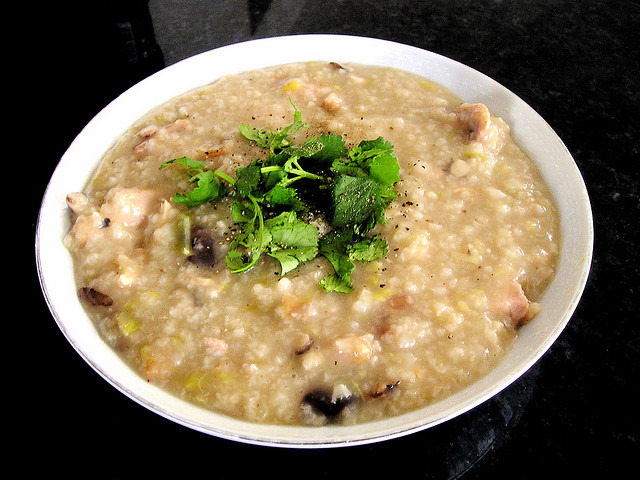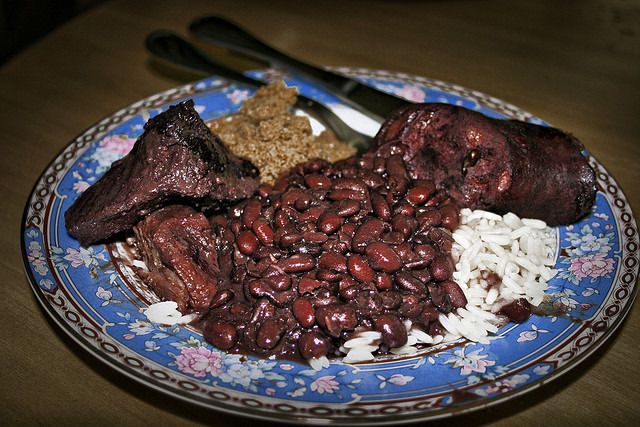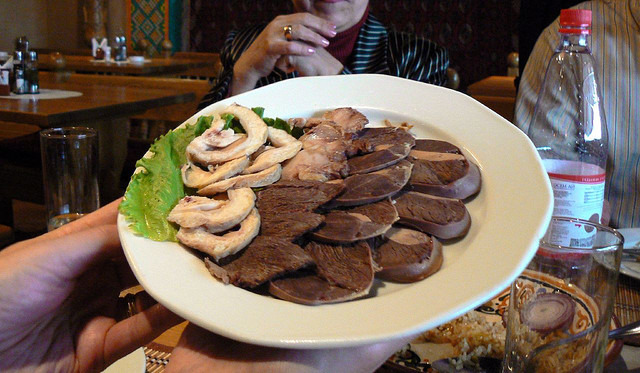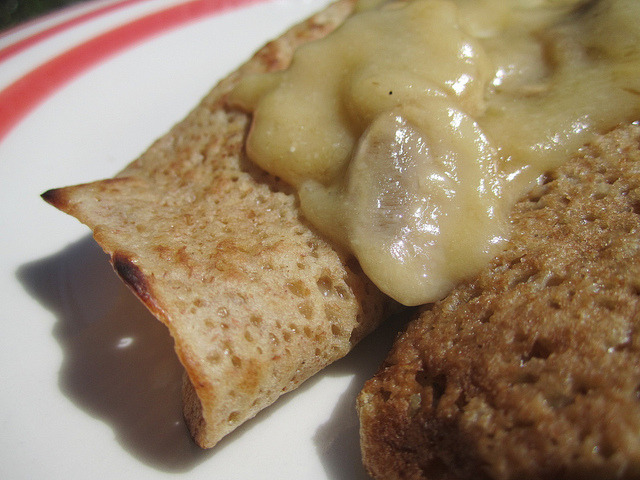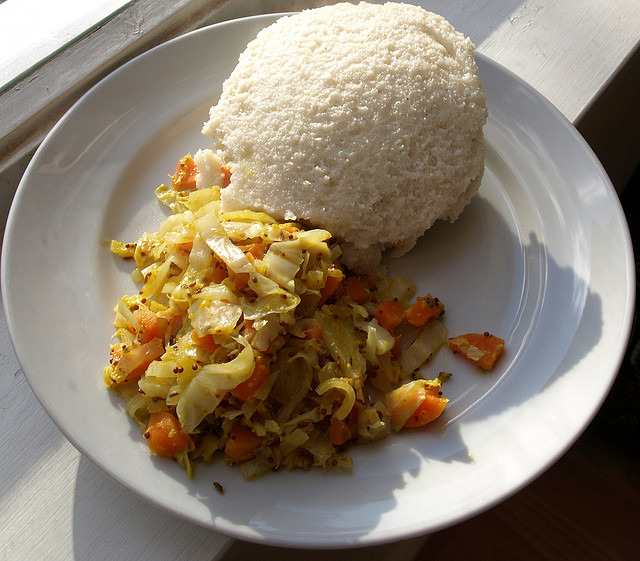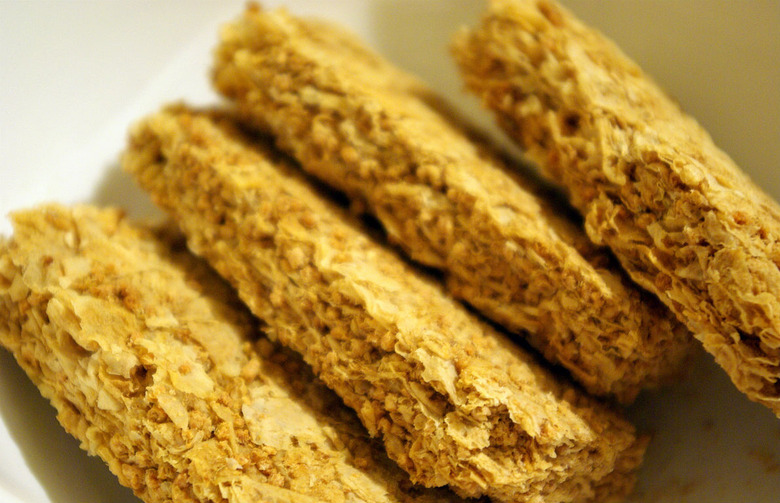What Athletes Eat Around The World Slideshow
Though the practice is becoming increasingly common, not all athletes fuel up for games with protein shakes — especially not athletes in places like Kazakhstan or Kenya, where protein powder is hard to come by. But they have to eat something in order to perform so well during the Olympics and other challenging events, right? What are their secrets? Here are nine things athletes from around the world eat in order to stay at the top of their games.
Bone Broth (USA)
The secret to the Los Angeles Lakers' strength and agility is a trifecta of butter, bacon, and bone, according to Grantland. The good fats are an efficient source of energy, and the broth helps fortify the tendons and ligaments due to a nutrient called glycosaminoglycans that you cannot find anywhere else outside of supplements. Brodo in New York serves the stuff from a take-out window.
Callaloo (Jamaica)
Originating in West Africa, callaloo, a leafy green stew of callaloo leaves (amaranth, or "Chinese spinach"), is consumed in various ways throughout the Caribbean. Unlike many other leafy greens, callaloo actually becomes more nutritious when cooked, as the water turns some of its fiber into starch, providing iron, calcium (four times the amount in broccoli), and antioxidants in addition to energy-boosting carbohydrates. No wonder athletes in Jamaica and Trinidad like it so much. Long Beach, California, residents can get this superfood any time at Callaloo Caribbean Kitchen.
Chankonabe (Japan)
The staple food of sumo wrestlers, chankonabe begins with a base of chicken or dashi broth; after that, the ingredients are a general protein free-for-all. Chicken? Sure. Tofu? Why not? Vegetables like daikon or bok choy are usually added as well. During sumo tournaments, chankonabe is served exclusively with chicken — not for any nutritional reason, but because chickens, like wrestlers, are always on two feet. While a moderate portion would be healthy, sumo wrestlers eat chankonabe in massive amounts. Try it at Kawasaki Chanko, a famous restaurant in Tokyo opened by a retired sumo wrestler in 1937.
Chia Fresca (Mexico)
Chia seeds are known to have excellent nutritional benefits, which is why you'll almost always find them in health food stores. They have been in the diet of Mexico's Tarahumara tribe, known for their ability to run ultra-long distances (50 to 100 miles at a time) with apparent ease, for centuries. The easiest and most delicious way to consume them is in chia fresca, or iskiate, which consists of chia seeds, water, and lemon or lime. Chia makes water gel, so there is a refreshing, snack-like quality to it, especially if you add sugar or agave. The Aztecs also used chia medicinally, to stimulate saliva flow and to relieve joint pain and sore skin, and they believed a tablespoon of it could sustain warriors for up to 24 hours. It is also rich in omega-3s and antioxidants.
Congee (Malaysia)
Malaysian badminton star Lee Chong Wei suffered an ankle injury a few months before the Olympics, but was determined to play. How did he recover? Porridge. His diet consisted largely of congee, a low-calorie rice porridge that can be eaten with fruits or savory items like chicken, as in the Indonesian dish bubur ayam. However, it's best to cut the sodium and eat it on its own for a quick energy boost. Try congee's many variations at Congee Village in New York.
Feijoada (Brazil)
The national dish of Brazil, this epic dish of beans and various cuts of beef and pork — trimmings, bacon, smoked ribs, smoked sausage, and jerked beef tongue — is served with rice and orange slices. Olympic chefs in London knew to prepare this for the Brazilian judo team without them even having to ask. Brazilian chef Rubens Izidorio, who came especially to Sheffield to train the chefs at the Kenwood Hotel, where the Olympic team would be staying, said: "It is a really nutritious dish for us, as it gives us lots of energy which is released really slowly." If you're in Rio de Janeiro, try it at Casa da Feijoada.
Horsemeat (Kazakhstan)
Kazak sportsmen had horse sausages delivered to them in England from Kazakhstan because they assumed they wouldn't be able to find any in London during the Olympics. After all, horse meat has double the iron of beef and 300 milligrams of omega-3 fatty acids for every 100 grams of meat — a beef strip steak has only 21 milligrams. However, the team, best known for its boxing and weightlifting champions, wouldn't have had to ship their sausages; horsemeat is sold at Borough Market, and The Lord Nelson in Southwark serves horsemeat burgers.
Oatcake (United Kingdom)
Olympic rower Pete Reed swears by eating an oatcake covered in cottage cheese before bed. The combination provides a hit of tryptophan, which triggers release of the sleep-inducing hormone melatonin, ensuring that he gets some actual rest despite pre-game anxiety. Plus, the cottage cheese is loaded with casein protein, which promotes muscle growth through the night. Maybe that's why Reed has the largest lung capacity ever recorded (11.68 liters —the average British man's is just under six). Oatcakes were a part of Elizabeth II's regular breakfast, too.
Ugali (Kenya)
Kenya is home to some of the fastest runners in the world. Only about 13 percent of the Kenyan diet consists of fats; the rest is largely composed of carbohydrates, mostly gained from ugali: maize flour (cornmeal) cooked with water. It is eaten with a chicken or beef stew and vegetables. This heavy-carb diet is not recommended for the average 9-to-5 office worker, but ugali provides a great source of energy for athletes who are actually putting those carbs to use.
Ugali (Kenya)
Kenya is home to some of the fastest runners in the world. Only about 13 percent of the Kenyan diet consists of fats; the rest is largely composed of carbohydrates, mostly gained from ugali: maize flour (cornmeal) cooked with water. It is eaten with a chicken or beef stew and vegetables. This heavy-carb diet is not recommended for the average 9-to-5 office worker, but ugali provides a great source of energy for athletes who are actually putting those carbs to use.
Weet-Bix (Australia)
This high-fiber, low-sugar biscuit, commonly eaten at breakfast in Australia and New Zealand, is perhaps especially popular among athletes down under because the company sponsors a number of Australian sports teams. Nevertheless, it has been a diet staple since the 1920s: It consists of 97 percent whole wheat and packs in a lot of fiber with very little sodium or artificial additives. Most importantly, it is portable and easy to eat on the field. Want to make Weet-Bix delicious? Try our gourmet chai weet-bix.
